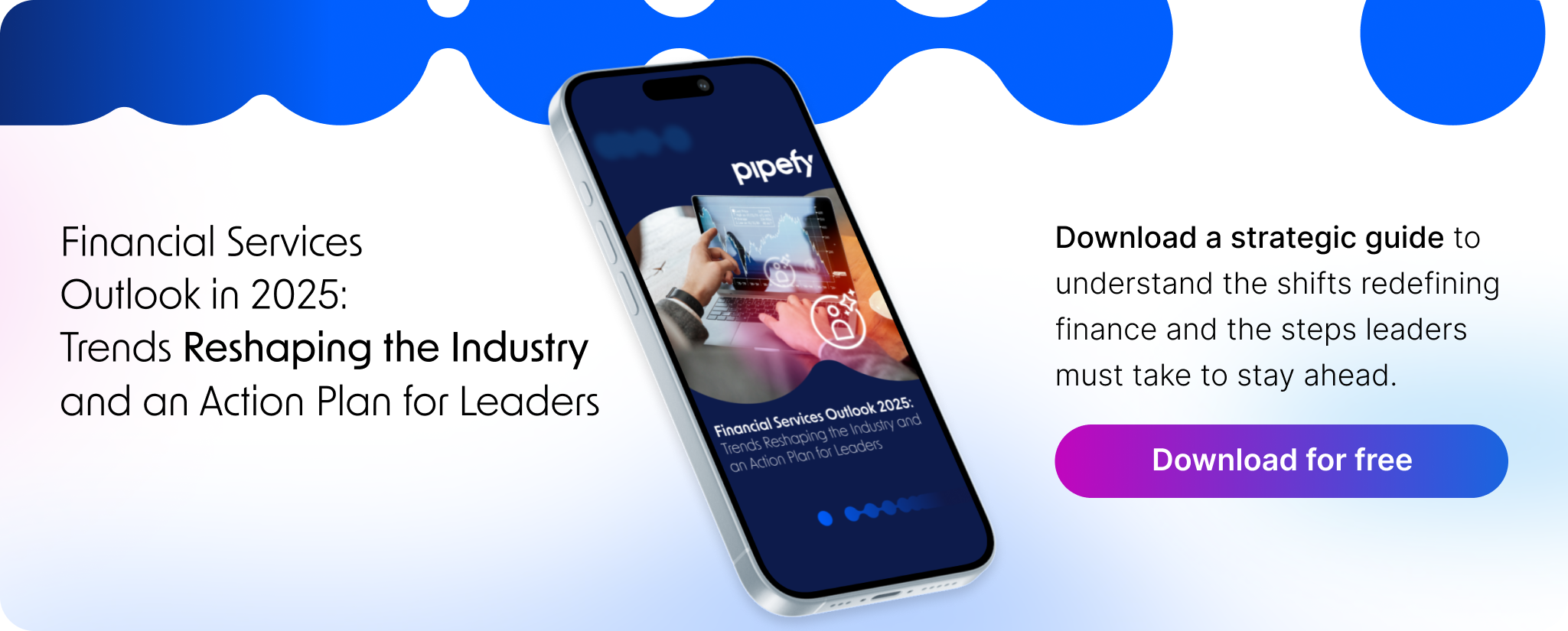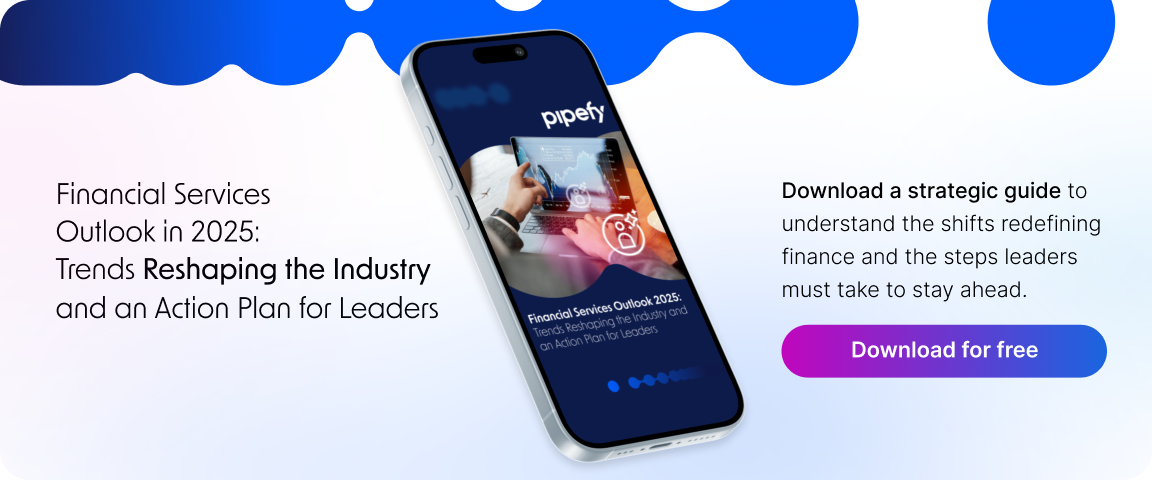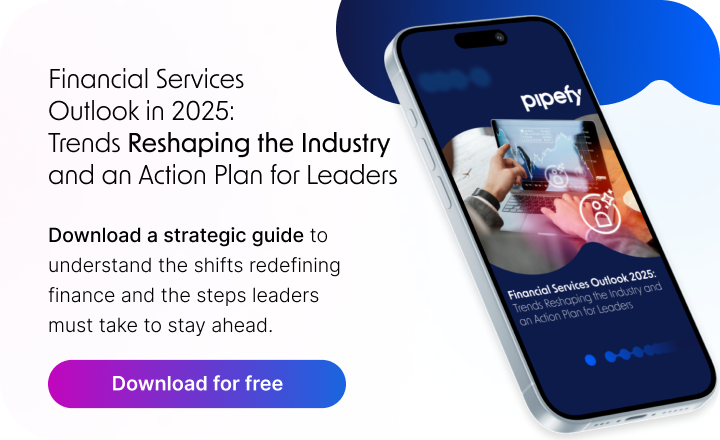
Digital refers to “business models with technology at the core.” In the digital era, this means that software is an expression of the business. And as a truly digital business, policies, processes, and procedures need to be digitized so that they can be managed with software for faster implementation and continuous improvement.
But as the demand for software outpaces the number of developers available, most organizations are left to fend for themselves and create solutions that go against the core practice of being a truly digital business. These workaround solutions not only slow down businesses, but they leave them vulnerable to real-world disasters. Enter low-code.
Low-code platforms are a modern, pragmatic medium for software delivery and a critical enabler for digital business. Over time, low-code has evolved from being a niche product for smaller applications to a more mainstream approach to software development.
In this low-code webinar recap, we cover why low-code plays a significant role in the digital era, how low-code enforces core agile principles, the evolution of the workforce, why the “non-technical” perception around low-code needs to change, and examples of low-code successes.
Below are key highlights and insights from:
- John Bratincevic, Senior Analyst at Forrester
- Justin Sears, CMO at Pipefy
The benefits of low-code development
According to a 2021 Forrester survey, 37% of developers already use a low-code platform for their work. “It’s becoming very mainstream, says Bratincevic. “It’s becoming a normal, first-class citizen in the development portfolio of enterprises.”
That’s because low-code platforms offer three critical benefits: speed, adaptability/innovation, and access to citizen development.
Speed
“When compared to coding, it’s a lot faster. “It’s somewhere in the 60-80% faster range, on average, depending on the platform and use case,” says Bratincevic. One way these platforms do that is by enforcing some of the core agile principles. “If you look through the agile principles manifesto, a lot of the stuff that we consider agile that a lot of firms covet are enabled by low-code.”
Adaptability and innovation
“You’re more inclined to experiment, to change the solution in an ongoing way to match the business conditions, so there’s just a lot more experimentation that goes on in these environments,” Bratincevic. “You know a certain amount of guaranteed quality that the platform gives you, so there’s this adaptability or innovation side to things.”
Expanding the developer pool with citizen development
The third benefit is likely also the most disruptive. That’s because low-code means you’re not coding every change. As a result, fewer coders are needed, and that opens the door to an expanded definition of “developer.”
“Maybe business analysts who write requirements now write apps instead because they know how software is put together and it’s not a big stretch for them,” says Bratincevic. “With low-code, business people can be empowered to make the applications or the automations they need themselves and this can bring about some pretty remarkable transformation when you see it done at scale.”
And with that evolution, one key player has emerged: the citizen developer.
“The citizen developer is tapping into something that’s been happening in the workforce for a while that now people are doing conscientiously through low-code development,” says Bratincevic. “I call this the evolution of the digital workforce. Think of it this way: if low code allows non-coders to develop software, then that means people who use computers or spreadsheets and emails can be upskilled and upleveled into a digital workforce that does development as part of their business jobs. They can configure automations, they can make databases and applications, they can do those sorts of things.”
For the business, citizen developers are a way to address the developer shortage while also transforming their workforce into multi-disciplinary digital problem solvers. “The person who is technology literate and gets things done adopts and wields technologies to solve business problems and figures out what those business problems are and takes responsibility for them personally,” says Bratincevic.
Find the right tool for your business with the Buyer’s Guide to Automation Platforms
How low-code enables agile principles
- The highest priority is to satisfy the customer through early and continuous delivery of valuable software. Low-code enables fast delivery.
- Welcome changing requirements, even late in development. Agile processes harness change for the customer’s competitive advantage. With low-code, change is easier and faster.
- Deliver working software frequently, from a couple of weeks to a couple of months, with a preference for the shorter timescale. Low-code shortens sprints.
- Business people and developers must work together daily throughout the project. Low-code allows live collaboration with businesses.
- Build projects around motivated individuals. Give them the environment and support they need, and trust them to get the job done. With low-code, business-led development = development by those motivated.
- The most efficient and effective method of conveying information to and within a development team is face-to-face conversation. Low-code allows live collaboration with businesses — or business does delivery.
- Working software is the primary measure of progress. Software always runs, so the focus is on business content.
- Agile processes promote sustainable development. The sponsors, developers, and users should be able to maintain a constant pace indefinitely. Agile process is a natural fit with low-code.
- Continuous attention to technical excellence and good design enhances agility. Low-code is platform-dependent, so teams have control.
- Simplicity — the art of maximizing the amount of work not done — is essential. Inherent in declarative abstraction
- The best architectures, requirements, and designs emerge from self-organizing teams. Requirements and design? Yes. Architecture? Possibly.
- At regular intervals, the team reflects on how to become more effective, then tunes and adjusts its behavior accordingly. Low-code capabilities, like real-time process reporting, allow teams to pull performance data and continuously improve applications
The value of low-code platforms
Low-code is a development approach that uses visual and declarative techniques instead of programming. In other words, it turns lines of code into a graphical form. However, Bratincevic points out that even today, there’s a certain misconception that surrounds low-code: that it’s all very niche.
“Anytime you buy into a low-code platform, you’re really just buying into one use case or one development pattern, and that’s it. It does that one thing and not much else. That’s really not the case,” says Bratincevic. “For a lot of these products, they fall into what we call general purpose low-code platforms, by which we mean there’s a sufficient range of pieces in the platform to make a big chunk of the bell curve of what application development entails.”
When you check enough of those boxes or cover enough of the bell curve of what defines modern application development, what you’re getting with some of these platforms is basically modern development in a box but with abstractions, says Bratincevic. “You’re getting out of the whole lifecycle a sufficient range of patterns that a lot of what constitutes an app in the business world can be made on the platform but without code, maybe by people who are coders. That’s kind of a remarkable thing.”
Examples of general purpose low-code functionality
| 1 | Tooling for data and integrations | – Data modeling and management – Integration dev tools and adapters |
| 2 | Tooling for process automation | – AI development tools – Process design and maintaining state – Supporting process technologies – Content tools |
| 3 | Tooling for UX | – User experience development tools – Mobile application development tools |
| 4 | Tooling for app testing, deployment, and management | – Testing capabilities – Application deployment options – Application change management – Autoscaling and performance management |
| 5 | Tooling for app and platform governance | – Dev process support and governance – Tools for design systems – Tools for business developers |
| 6 | Reporting, extensions, and features | – Reporting and analysis tools – Tools for coding – Security certifications – SLAs for cloud services |
Low-code: What does it mean in the digital era?
For some, the benefits of low-code have led to a notion that low-code is really just for lesser developers and lesser use cases. “What we found was the opposite of the truth,” says Bratincevic.
According to Forrester research, the professional low-coder (professional software developers who are using low-code), when compared to the coders, tends to do more.
“They don’t just code. They do business analysis, they do testing which aligns with another agile principle, they’re much more likely to focus on business priorities and see business priorities,” says Bratincevic. “Low-coders are more focused on business results than true traditional coders are, and they really care about the real-world impact of the software that they’re building in a way that’s different from your traditional coder type.”
Low-code professionals at a glance
- Perform 2x as many technology roles
- 66% more likely to rate business priorities as high or critical
- 72% more likely to work in teams that use business metrics to measure progress and success
- 54% more likely to work on “advanced” tech and use cases
(According to Forrester data.)
Build vs. buy: How low-code is expanding the middle ground
The boundary between build vs. buy software is becoming obliterated, says Bratincevic. Whereas these two options were once the only options, they break down in the digital era and companies are now faced with changing economics of traditional development.
Traditionally, Bratincevic, firms thought about software as a selective investment with a lot of risk, pain, and expense between two options:
- Buy. “This means I take this beautiful, perfect, lovely, vanilla solution, and I pay money for it. I install it, and it solves my problem and meets my needs,” says Bratincevic.
- Build. “This is dipping in the primordial soup of code and assembling this absolutely unique thing from scratch.”
“However, these two options, or two extreme ends of the spectrum of solutions, aren’t the real options in the real world, and those pure ideas don’t really exist,” says Bratincevic. “There’s a whole spectrum of solutions between them and the economics and the practicality of that spectrum is changing massively because of things like low-code and enabling other kinds of developers and different delivery models.”
“We found that the traditional way of looking at building vs. buying a software solution completely breaks down in the digital era, and there are four assumptions of that old-fashioned way of looking at things that just need to be thrown away because they’re completely wrong,” says Bratincevic.
The four traditional build vs. buy software assumptions that fail in the digital era include:
- Underestimating the complexity and cost of packaged solutions.
- Overestimating the cost and complexity of new app development.
- Underestimating the value of platforms and ecosystems.
- Overestimating how similar businesses are.
“Companies see the bespoke custom option as incredibly risky and expensive, and that isn’t necessarily the case with low-code or with cloud platforms because of the way they’ve matured in the last five years,” says Bratincevic.
Low-code platforms are not only essential for the digital era, they are more economical, they meet needs better, and the cost of creating bespoke solutions is much lower.
Business units need agility. IT needs control. See how no-code delivers both with No-Code Automation: Good for Business, Great for IT
Example of the shifting build vs. buy software mentality
For companies that are small, large, simple, and complex, the gap between building and buying off-the-shelf solutions is expanding. An example that comes to mind for Bratincevic involves a big bank in Europe with 50,000 people. The bank brought in one of the big strategy consultancies to modernize many of their core systems.
“It’s an industry with a lot of money, so there’s a lot of good software going after it,” says Bratincevic. “They looked at the big off-the-shelf packages that are really good for banking and they looked at coding from scratch for this modernization effort exercise. What they decided to do instead was use a low-code platform.”
Not only were the bank’s results better, but they were also faster and cheaper. The bank was also able to iterate and experiment with new financial products because of the low-code platform underneath.
“Low-code opened up this bespoke software path that coding wouldn’t have,” says Bratincevic. “They said: We want to rehabilitate shadow IT, we want business people to make applications as a strategy, we want to have governance for all those sorts of things. They implemented their strategy over a period of several years, and — when I spoke to them — they had about 1,200 developers working on the low-code platform internally. The vast majority of low-coders were business people, IT, and traditional developers, but it was mostly business people — like three quarters or more — and they had about 4,000 applications.”
3 low-code customer success stories
Here are some ways three companies have solved interal process management problems using a low-code platform:
Samsonite
Samsonite is the worldwide leader in superior travel bags, luggage and accessories. Products are sold in over 100 countries in Asia, North America, Europe, and Latin America via wholesale distribution, retail, and e-commerce.
Before Pipefy:
- Procurement process managed manually by email and paper
- No visibility over the process
- Teams bought products without approvals
- All information was pulled manually into the ERP
- No accurate way to report spending or process results
After Pipefy:
- Standardized and centralized procurement process
- Intake information collected and standardized with Pipefy Forms
- Stakeholders notified via emails and alerts
- Integrated Pipefy with ERP systems to eliminate manual data entry, eliminating resulting errors
- Gained the ability to run reports at every stage of the process
Key stats:
- 100% of requests are handled in Pipefy
- 177% ROI
| Read the full case study: How Samsonite Built an Error-Proof Purchasing Process With Pipefy |
Bloomin’ Brands
Bloomin’ Brands, Inc. is one of the largest casual dining companies in the world. They have over 90,000 employees and 1,500 restaurants — such as Outback Steakhouse and Aussie Grill — in more than 20 countries.
Before Pipefy:
- 200 storefronts in Brazil without a standardized request intake channel
- Manual process management using phone, email, WhatsApp, Teams, etc.
- Lack of control, visibility, and transparency for back-office processes
- Decentralized data with no audit trail or history of past activity
After Pipefy:
- Centralized intake portals for incoming store requests and departmental requests
- Managers now able to track metrics and generate reports
- Full visibility into request status and ownership
- Improved process control and standardization
Key stats:
- 84 active processes in Pipefy across 12 departments
- 150% ROI
| Read the full case study: How Bloomin’ Brands Boosted Their Back-Office Operations |
CNH Industrial
CNH Industrial is a global manufacturer of industrial machines. The company owns 12 brands and employs over 60,000 individuals in 180 countries around the world.
Before Pipefy:
- HR team used 15+ systems, without internal integration
- Lack of communication and collaboration among subdepartment teams
- Manual tasks (e.g. sending multiple stakeholder emails) took too much time
- Rework wasted valuable time
- Employees signed documents that the team stored physically, which made them impossible to share electronically
After Pipefy:
- All HR processes are centrally connected in a single platform
- Orchestrated multiple workflows
- Process connections start a new process when a previous one ends
- Employee requests are submitted to the HR team via a self-service experience with Pipefy Forms
- System integration makes processes run efficiently by sending and pulling information based on actions and triggers, both for employees and candidates
Key stats:
- 2,200+ hours saved monthly
- 228% ROI
| Read the full case study here: How CNH Industrial Digitized Their Employee Experience With Pipefy |
How low-code meets business wants, IT needs
Historically, when business people decide they need an application for some repeatable process that should be automated, they do one of two things:
- IT buys it off the shelf.
- IT builds it from scratch, so they can be sure that it complies with the security and governance policies of the company.
“But as John alluded to,” says Sears, “out-of-the-box apps rarely meet the specific unique needs of a particular business or a particular department or a particular use case, so the business asks for customizations, configurations, or integrations.”
This leads to a backlog of IT requests and gets in the way of business agility, leaving both the business and IT at a loss and make-shift solutions or manual workarounds. This can become especially problematic for teams working across multiple systems and process departments. “This creates lots of friction and robs the company of the visibility that they would otherwise have if they had an end-to-end, low-code seamless way to track that process,” says Sears.
Low-code bridges the application gap between citizen developers and IT policies and empowers business teams to own and automate their own processes with an IT-sanctioned solution.
| Before bridging the application gap | After bridging the application gap |
|---|---|
| General apps don’t meet business needs | Custom apps built by the business |
| IT overwhelmed by backlog of requests | IT confident in security and governance standards |
| Fragmented flows across departments | Seamless workflows unite departments |
ICYMI: Low-code webinar series recaps and insights
Unable to attend previous webinars? Don’t miss out on industry-leading conversations and insights. Check out our previous low-code webinar series recaps to keep informed:
Low-Code Webinar Series Recap: Why Low-Code Is Key to Digital Transformation, featuring guest speaker Carlos Cima, Vice President of Technology at SoftBank Group International.
Low-Code Webinar Series Recap: How IBM and Pipefy Navigate the Digital Landscape With Low-Code Solutions, featuring guest speaker Guilherme Novaes, Ecosystem Director at IBM Brasil.
Low-Code Webinar Series Recap: How Accenture Made Low-Code the Backbone of Digital Transformation and Innovation, featuring guest speakers Fabiano Guastella, Digital Innovation Associate Director at Accenture, and Clarison Benteo, Digital Transformation Manager at Accenture.
Low-Code Webinar Series Recap: How Lacoste and Ocean Network Express Used Pipefy to Transform Digital Experiences, featuring guest speakers Vinicius Castro, Operations and Digital Projects Manager at Lacoste, and Sergio Marques, Business Process Senior Analyst at Ocean Network Express.
*Some comments and quotes have been edited for clarity.










